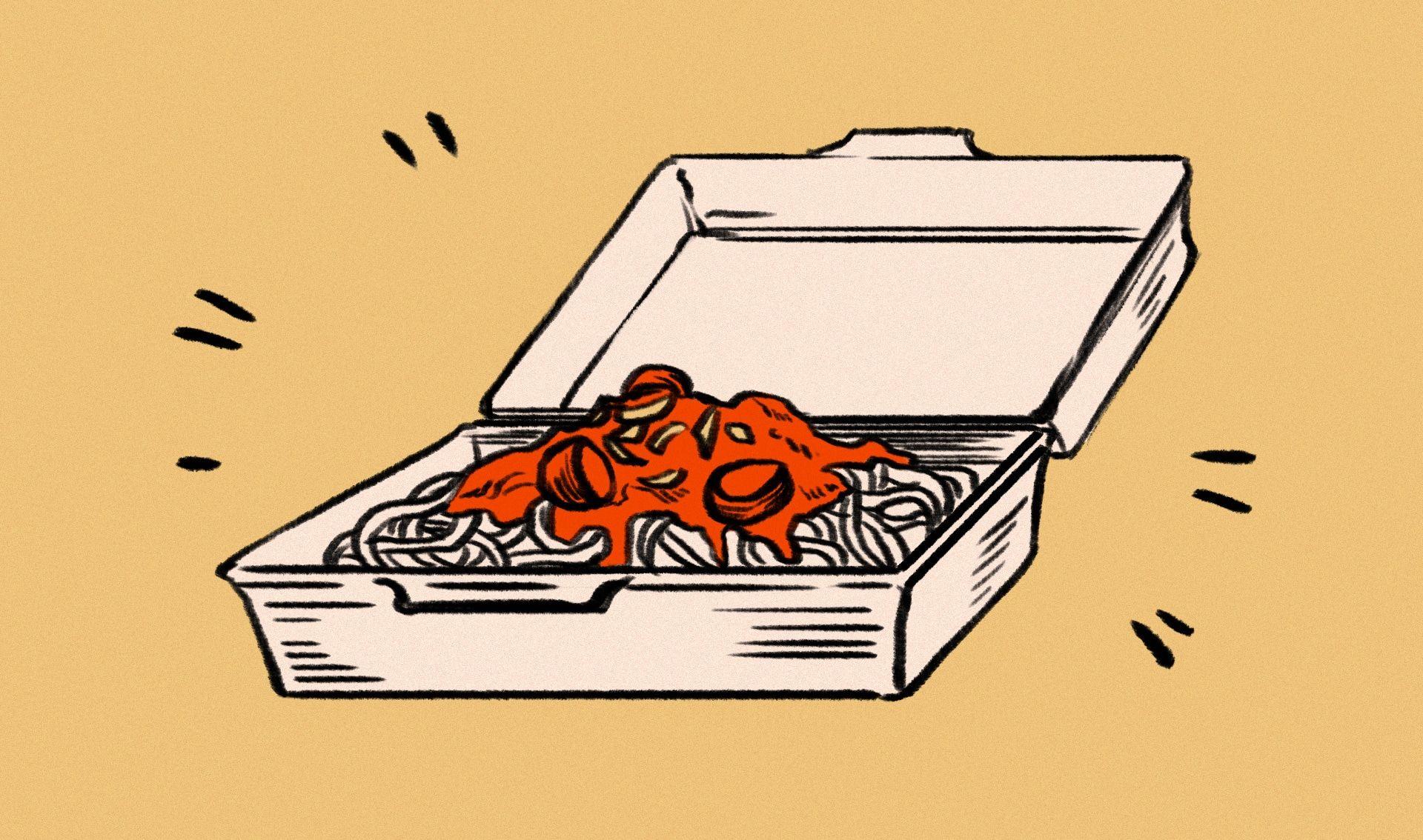Sweet spaghetti is like that kitschy ‘90’s boy band song on your playlist: it’s something you’d rather not admit to liking.
Due to the nature of my part-time job here at Pepper.ph and my own all-encompassing love for good food (spending for a good haircut gives me pause, but I would happily fork over thrice that amount for a full-course meal prepared by a very skilled chef), I’ve been fortunate enough to sample some of the best and most authentic world cuisines but good gracious, I still have a raging craving for the stuff from time to time.
And apparently, I’m far from alone.
Thousands of sweet spaghetti servings are sold by our several local fast food outlets every day, and you’d be hard-pressed to attend any children’s party in the country (and perhaps even beyond) without being given a serving of it. We Filipinos enjoy a wide range of native sweets and confections, but how exactly did our penchant for sugar spill over into non-dessert territory? The answer, it turns out, is far more complex than the flavor profile of the dish in question.
From Luxury to Necessity: Why We Love Sugar So Much
Sugar in itself is an addictive substance. When consumed in large amounts, it exerts a powerful effect on the reward centers of the brain and thus causing people to consume more of it to get the same amount of pleasure each time.
Historically speaking, our nationwide fixation with sugar originated from the same driving force behind some of the world’s most aspirational luxury brands. Although we are blessed with an abundance of natural sweeteners (palm sugar, panocha, honey, etc.), the foreign invaders who took over our country for centuries restricted their consumption to the upper classes (which was mostly composed of the said invaders, hence a lot of the desserts and sweets from the time period retaining their Spanish or American names to this day). The poorer classes only got to sample sweets on special occasions, if at all, so sugar was very much in vogue as a status symbol.
Once sugar was harvested and mass-produced in the 19th century (thus making it cheaper and more readily available), the masses latched on to it and added it to virtually everything.
Lastly, there’s always the nostalgia factor. Since sweet food is normally associated with happy memories in one’s childhood (the period of time in most people’s life where they felt most secure and carefree), so we end up craving it in times of stress (which typically increases as we get older).
Birthday Noodles and Beyond: The Beginnings of Sweet Spaghetti
If you take a close look at the run-of-the-mill spaghetti noodles or spaghetti sauce commercial, you might notice a common theme.
Apart from being a Filipino comfort food staple (and Italian culinary nightmare), sweet spaghetti is also the default children’s party dish, hence many commercials basing their premise on the said event. And although there’s no data as to when and where the recipe originated exactly, it was most likely conceived at one such celebration.
Spaghetti with meat sauce isn’t a luxury dish, but it’s not cheap enough for most people’s daily consumption either and its foreign origins gave it added gloss as a party centerpiece. And since Filipino festivities tend to have expanding guest lists, savvy homemakers eventually learned to wield extenders in making the celebratory pasta dish.
The addition of sweet banana ketchup (or in some cases, condensed milk) to the tomato sauce, and that of sliced red hotdogs into the ground beef mixture satisfied guest appetites (and the birthday child’s sweet tooth) and the household budget, resulting in the ultimate nostalgia evoking birthday dish-slash-comfort food on this side of the globe.
Fast food corporations eventually took notice of the hold that sweet spaghetti had on Filipino palates and decided to cash in on it.
Some say that Jollibee was the first to serve the birthday favorite as a regular offering, but whether that’s true or not, you can’t deny that it’s become a fast food menu staple. (So much so that our very own sweet spaghetti is the local McDonald’s offering that’s unique to this country.)
With somewhat overcooked noodles and sliced red hotdogs in its saccharine-sweet sauce, our sweet spaghetti is an anomaly in a world where al dente pasta and a tart-savory red sauce (and no hotdogs) are the hallmarks of a perfectly-executed spaghetti dish. Yet somehow, it has managed to survive fickle food trends and increasingly exacting cooking standards, becoming not just a heavily-bastardized Italian dish but an undeniably Filipino favorite in its own right in the process.
